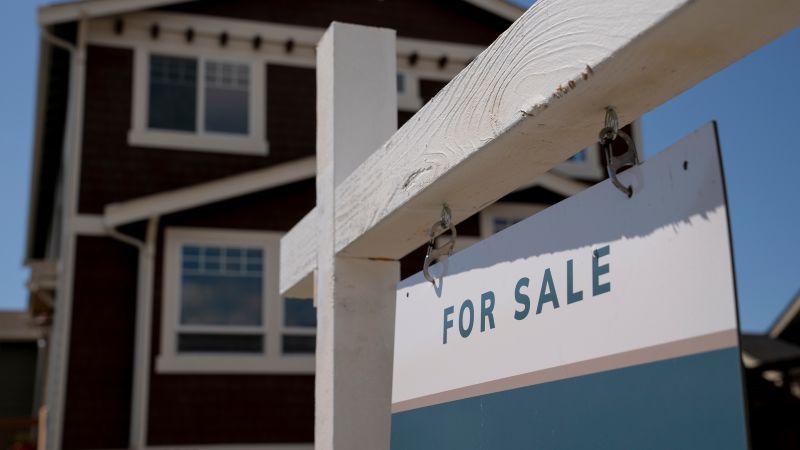Mortgage rates fell this week to the lowest point since February 2023, in a welcome sign for Americans grappling with a tough housing market. The standard, 30-year fixed-rate mortgage averaged 6.20% in the week ended September 12, down from last week’s 6.35% and well below the two-decade high of 7.79% in October 2023. Economic data pointing to slower inflation and a weakening job market have paved the way for the Federal Reserve to roll out the first interest-rate cut since 2020, slated for the central bank’s upcoming policy meeting next week. The Fed doesn’t directly set mortgage rates, but its actions do influence them through movements in bond yields. The benchmark 10-year US Treasury yield, which moves in anticipation of the Fed’s decisions on interest rates, has tumbled over the past several weeks on data showing that price pressures are easing and the job market isn’t heating up.
Even with borrowing costs moving lower, the US housing market remains unaffordable for millions of home seekers, especially those with low incomes living in cities experiencing fast home-price growth, such as New York City, San Diego, and Las Vegas. Renters across America are also struggling, particularly in urban population centers like New York City, Los Angeles, and the Miami metropolitan area. According to a recent Moody’s report that analyzed rents and family incomes, renters in those areas spend more than 30% of their income on rent. A key issue driving America’s housing affordability crisis is a persistent lack of homes on the market. Supply is not keeping up with demand due to reasons such as construction costs, complicated zoning laws, limited land for development, and shortages of workers for home construction. Many homeowners are also choosing to stay put with their low mortgage rates instead of selling their homes.
Despite some positive steps this year, such as total housing inventory improving every month, the supply of homes is still not enough to meet demand. Total housing inventory stood at 1.33 million units at the end of July, up 0.8% from June and 19.8% higher than a year earlier. However, this is still insufficient to keep up with demand. Persistent housing unaffordability has resulted in sluggish demand. Sales of previously owned homes, which make up a vast majority of the market and act as a proxy for housing demand, rose 1.3% in July, breaking a streak of four consecutive monthly declines. Despite the rebound, NAR’s chief economist, Lawrence Yun, stated that “home sales are still sluggish” in a release.
The decline in mortgage rates began early last month with news affirming lower interest rates in the future, particularly after a weaker-than-expected jobs report for July. Mortgage rates have fallen more than half a percent over the last six weeks and are at their lowest level since February 2023. Rates continue to soften due to incoming economic data that is more sedate. However, despite the improving mortgage rate environment, prospective buyers remain on the sidelines as they navigate high house prices and persistent supply shortages. In many markets across the country, supply is simply not keeping up with demand. Various factors contribute to this, including construction costs, zoning laws, limited land for development, and shortages of construction workers. Many homeowners are also holding onto their low mortgage rates instead of selling their homes.
Renters in urban areas are also struggling to afford housing, with many spending more than 30% of their income on rent in cities like New York City, Los Angeles, and Miami. The unaffordability of housing has led to sluggish demand, despite some positive steps in improving housing inventory. While sales of previously owned homes rose 1.3% in July, they are still considered sluggish, according to NAR’s chief economist. The Federal Reserve’s anticipated interest rate cut in the upcoming policy meeting is expected to further influence mortgage rates, which have been impacted by movements in bond yields. Despite the challenges in the housing market, there have been signs of improvement, such as the steady decline in mortgage rates over the past few weeks and the increase in housing inventory.













